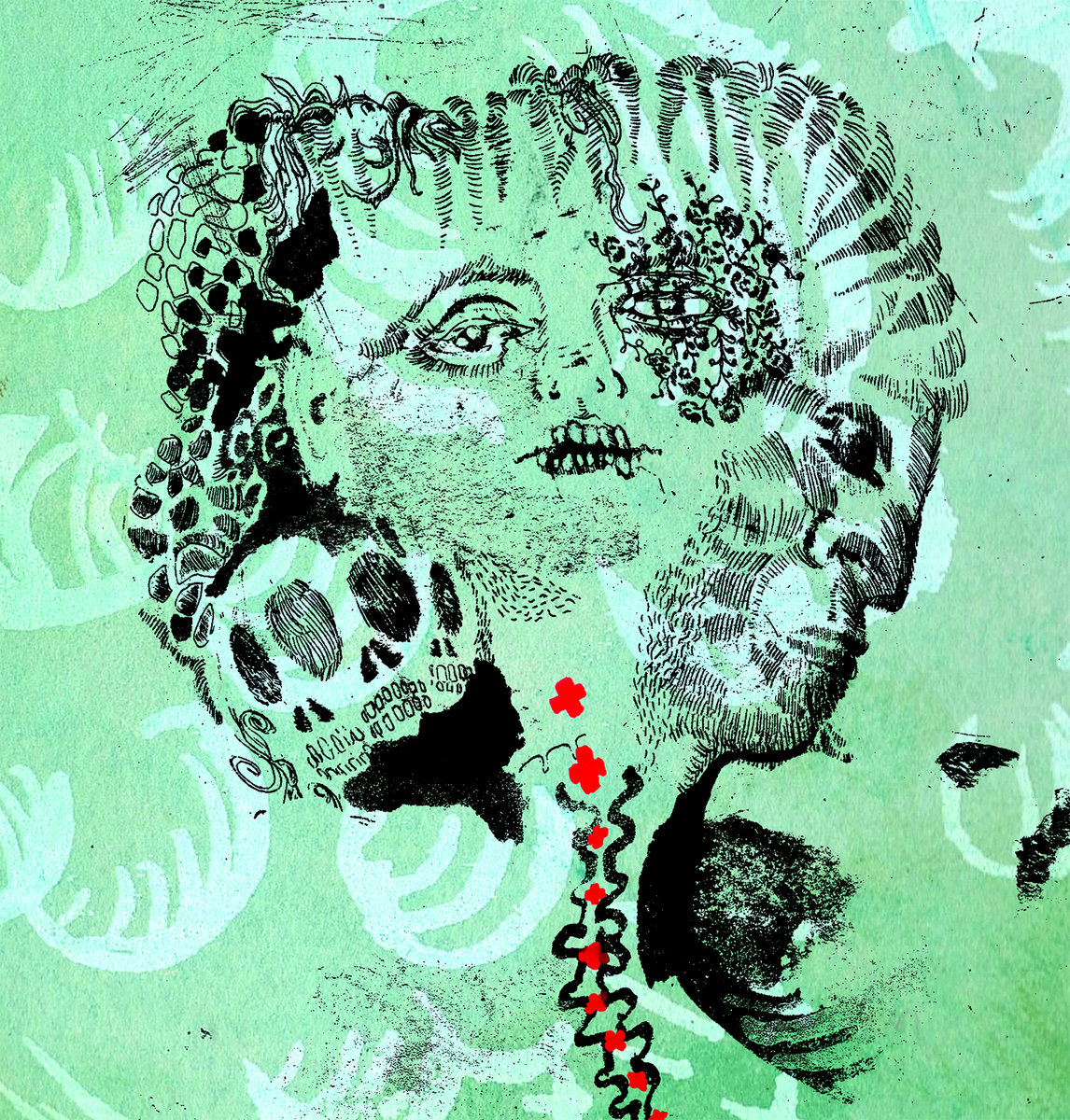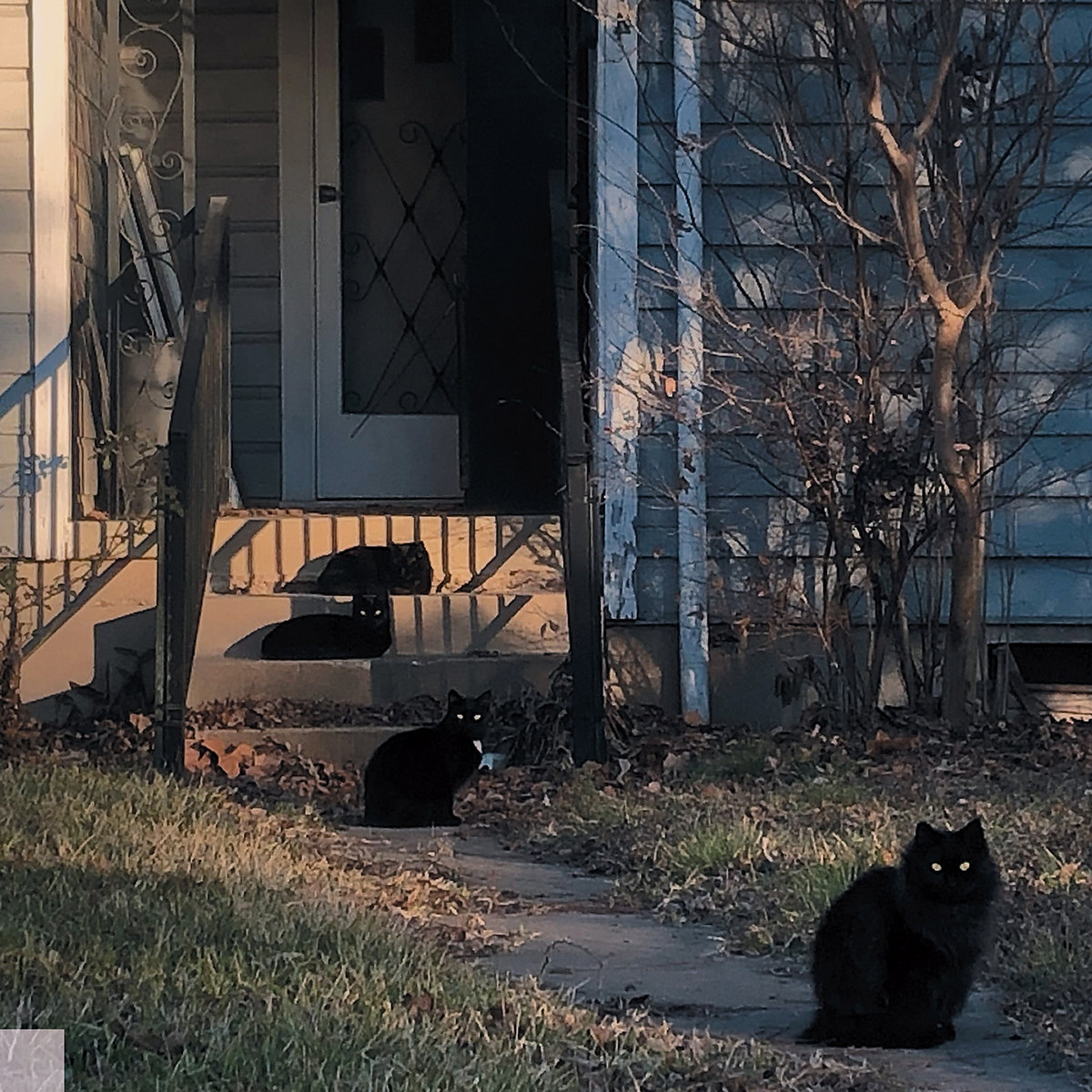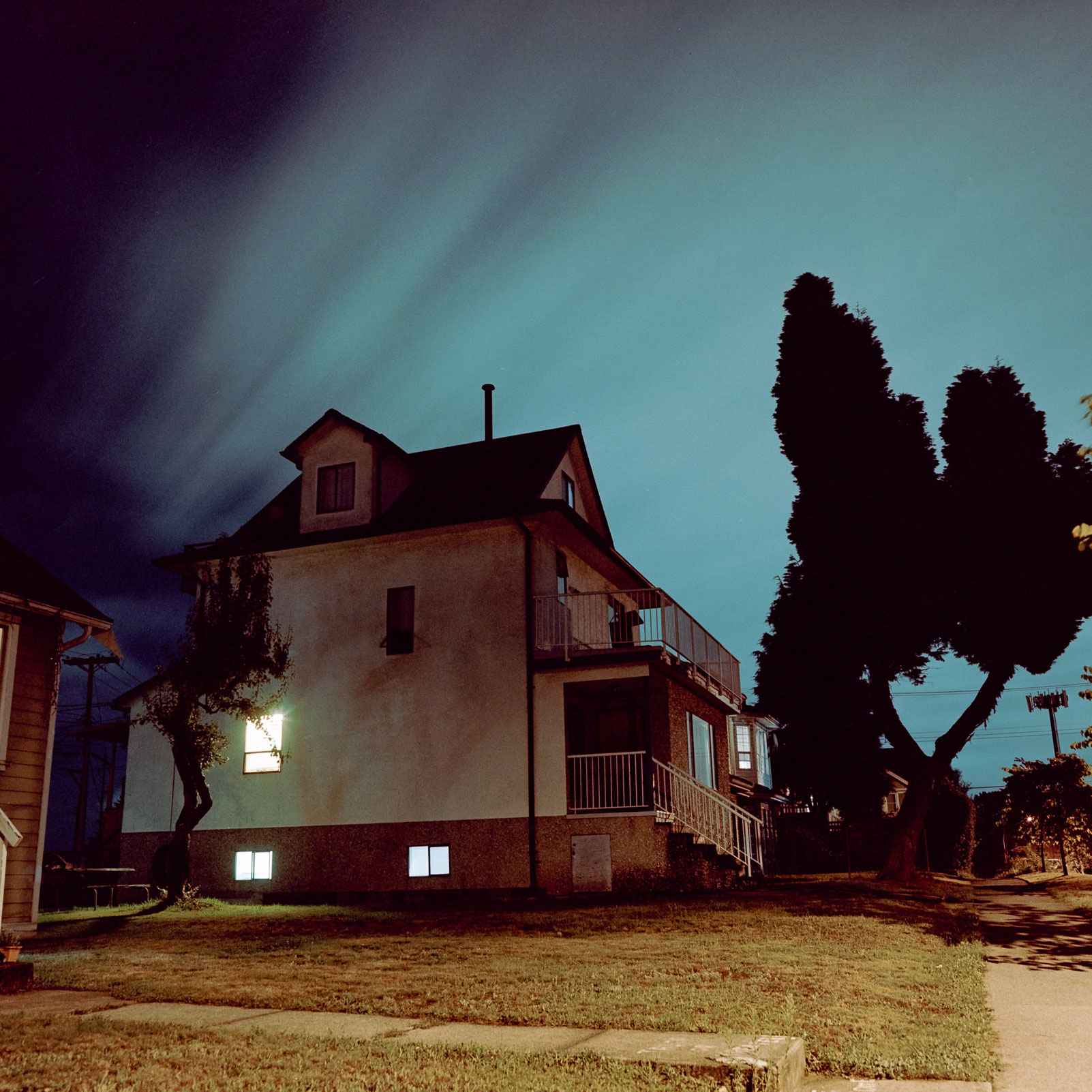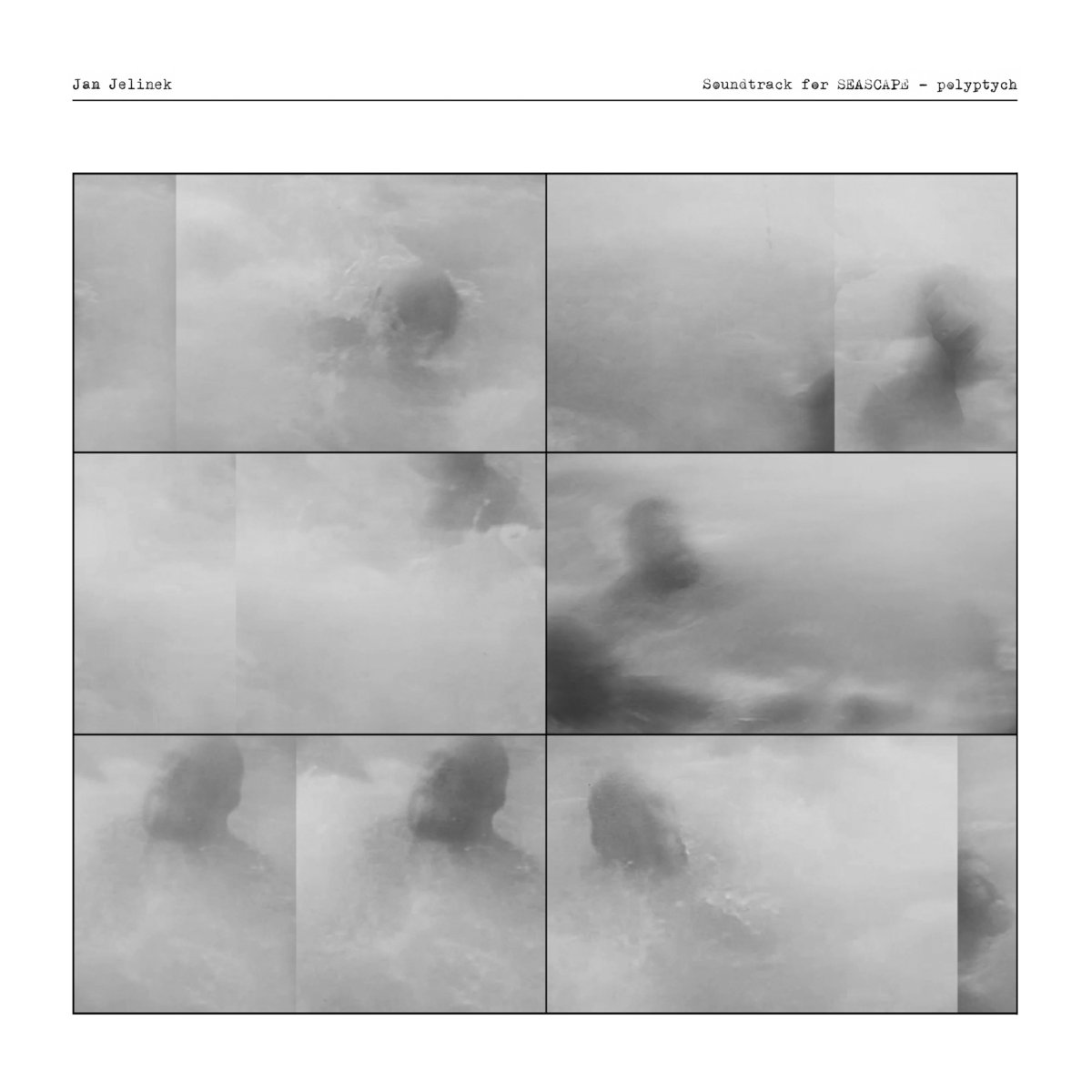 This latest LP from Big Blood is their first for Ba Da Bing and a spiritual successor of sorts to Do You Want to Have a Skeleton Dream?, as the band are back in "full family trio retro-pop extravaganza" mode. For the most part, Quinnissa (who was apparently only 13 when this album was recorded) handles the lead vocals for a series of hooky, bass-driven garage rock nuggets, though there are also a couple of headier Colleen-sung gems for fans of the band's darker, more psychedelic side. Notably, Caleb's frayed yelp is entirely absent from the proceedings, but it probably would have felt out of place among the unabashed throwback pop fare. Moreover, First Aid Kit feels like a full-on Quinnissa showcase, which makes for a rather unique entry in the Big Blood canon, as she is one hell of a belter and also spontaneously improvised all her lyrics during recordings. As Caleb notes in the album description, being in a band with your teenage daughter is admittedly something of a messy and volatile situation ("lots of practices end with her being tossed from the band"), but I can see why they are sticking with this format, as Quinnissa increasingly feels like a pop supernova in its formative stages.
This latest LP from Big Blood is their first for Ba Da Bing and a spiritual successor of sorts to Do You Want to Have a Skeleton Dream?, as the band are back in "full family trio retro-pop extravaganza" mode. For the most part, Quinnissa (who was apparently only 13 when this album was recorded) handles the lead vocals for a series of hooky, bass-driven garage rock nuggets, though there are also a couple of headier Colleen-sung gems for fans of the band's darker, more psychedelic side. Notably, Caleb's frayed yelp is entirely absent from the proceedings, but it probably would have felt out of place among the unabashed throwback pop fare. Moreover, First Aid Kit feels like a full-on Quinnissa showcase, which makes for a rather unique entry in the Big Blood canon, as she is one hell of a belter and also spontaneously improvised all her lyrics during recordings. As Caleb notes in the album description, being in a band with your teenage daughter is admittedly something of a messy and volatile situation ("lots of practices end with her being tossed from the band"), but I can see why they are sticking with this format, as Quinnissa increasingly feels like a pop supernova in its formative stages.
Ba Da Bing/Feeding Tube
This album's overall feel is something akin to a raucous wedding reception in which members of The Cramps and B-52's join forces for a spirited and spontaneous set of half-remembered '60s bubblegum pop covers. The opening "In My Head" represents that vein in its purest form, as it is built from little more than a meaty bass line, a simple thumping beat, and a subtly surf-damaged guitar tone. The most perfect iteration of that aesthetic comes much later on the album, as "1000 Times" feels like a raw and raucous cover of an imagined classic by someone like The Ronettes. Elsewhere, the dark paranoia of "Never Ending Nightmare" is yet another notable Quinnissa showcase, though its unsettling subject matter is nicely invigorated by a bouncy bassline, quirky percussion, and a killer chorus hook. Quinnissa also handles lead vocals on "Infinite Space," but that piece feels like a comparative anomaly more akin to Big Blood's non-Quinnissa fare. It still feels a bit unusually anthemic and driving for a Big Blood song, but reaching infinitely to space is a more traditional lyrical theme for the band and there are some very cool howling psych touches in the periphery. Admittedly, a lot of Quinnissa's lyrics sound like they were composed by a 13-year-old, but as the album's description insightfully observes, "teenage impulses fit right in with the band's intent, which is making music that's honest, inclusive and flawed." To their everlasting credit, Big Blood seem to be endlessly resourceful in their balancing of flawed spontaneity and thoughtful art, as Mulkerin harvests "the ghostly presence of past takes" as a subtly trippy background layer throughout the album.
 One of the reasons I had to investigate this latest album from the always prolific Masami Akita is that I was surprised it took him this long to make a cat themed album. A staunch animal rights activists and composer of many animal themed albums (Chickens! Bears! Dolphins! A whole bunch of other birds!), it took well over 40 years into his career to produce something in respect of the venerable house feline. How much this applies beyond the title and beautiful photography used as packaging is of course questionable, but musically it is Akita at his most diverse.
One of the reasons I had to investigate this latest album from the always prolific Masami Akita is that I was surprised it took him this long to make a cat themed album. A staunch animal rights activists and composer of many animal themed albums (Chickens! Bears! Dolphins! A whole bunch of other birds!), it took well over 40 years into his career to produce something in respect of the venerable house feline. How much this applies beyond the title and beautiful photography used as packaging is of course questionable, but musically it is Akita at his most diverse.


 This latest collection from Folklore Tapes borrows its title from a Japanese proverb about knowing one's limitations ("the frog in the well knows nothing of the sea"), which was itself borrowed from a Chinese fable. In the context of an album devoted to UFO lore, of course, humans are the frogs, the infinite universe is the ocean, and the usual eclectic Folklore Tapes cast of characters gleefully devote themselves to celebrating the colorful hoaxes and stories of their countrymen who claim to have experienced a visit from extraterrestrial life. While alien visitations are admittedly a bit outside the usual realm of Folklore Tapes' research, I would be hard pressed to think of a roster of artists better suited to tackle the topic, as just about everyone involved brings a freewheeling playfulness to the theme and surprises abound. This is yet another characteristically brilliant and inspired compilation from the inimitable Folklore Tapes. Hell, it might even be their best yet.
This latest collection from Folklore Tapes borrows its title from a Japanese proverb about knowing one's limitations ("the frog in the well knows nothing of the sea"), which was itself borrowed from a Chinese fable. In the context of an album devoted to UFO lore, of course, humans are the frogs, the infinite universe is the ocean, and the usual eclectic Folklore Tapes cast of characters gleefully devote themselves to celebrating the colorful hoaxes and stories of their countrymen who claim to have experienced a visit from extraterrestrial life. While alien visitations are admittedly a bit outside the usual realm of Folklore Tapes' research, I would be hard pressed to think of a roster of artists better suited to tackle the topic, as just about everyone involved brings a freewheeling playfulness to the theme and surprises abound. This is yet another characteristically brilliant and inspired compilation from the inimitable Folklore Tapes. Hell, it might even be their best yet. Like 2021's Four Lies in the Eavesdrop Business, composer/multi-instrumentalist Matt Weston's latest work is a lengthy double record. However, this time he specifically utilizes the format to create four side-long and expansive pieces that constantly develop, bringing in a multitude of different sounds and elements. The result is a series of intense, dense compositions that can be hard to keep up with at first, but eventually reveal a deep sense of complexity in their structures.
Like 2021's Four Lies in the Eavesdrop Business, composer/multi-instrumentalist Matt Weston's latest work is a lengthy double record. However, this time he specifically utilizes the format to create four side-long and expansive pieces that constantly develop, bringing in a multitude of different sounds and elements. The result is a series of intense, dense compositions that can be hard to keep up with at first, but eventually reveal a deep sense of complexity in their structures. As Alter's album description insightfully observes, a collaboration between these two Editions Mego alumnae "somehow seemed inevitable," yet I was still pleasantly surprised at how seamlessly Lewis and Void were able to combine their visions into something that feels both new and wonderful. On one level, the success of this union makes perfect sense, as both artists tend to turn out some of their strongest work in collaborative situations (Carter Tutti Void and Lewis's KLMNOPQ EP with Peder Mannerfelt being prime examples of that phenomenon). However, both artists excel in extremely specific realms that have some limitations: Lewis is exceptionally good at collaging non-musical sounds, while Void seems particularly adept at crafting eccentric noise-damaged techno.
As Alter's album description insightfully observes, a collaboration between these two Editions Mego alumnae "somehow seemed inevitable," yet I was still pleasantly surprised at how seamlessly Lewis and Void were able to combine their visions into something that feels both new and wonderful. On one level, the success of this union makes perfect sense, as both artists tend to turn out some of their strongest work in collaborative situations (Carter Tutti Void and Lewis's KLMNOPQ EP with Peder Mannerfelt being prime examples of that phenomenon). However, both artists excel in extremely specific realms that have some limitations: Lewis is exceptionally good at collaging non-musical sounds, while Void seems particularly adept at crafting eccentric noise-damaged techno.  This latest album from Barbieri is intended as a sister album to 2019's landmark Ecstatic Computation and has been released to correspond with the imminent reissue of the latter. The central difference between the two albums is that Myuthafoo gradually and organically took shape during Barbieri's extensive touring, as the "nomadic, interactive energy" of those many live dates inspired her to play with experimental variations in her process each night. More specifically, she would program patterns into her sequencer, then feed them into her "arsenal of noise generators" to explore different combinations and the most compelling results were set aside for future expansion and/or eventual release.
This latest album from Barbieri is intended as a sister album to 2019's landmark Ecstatic Computation and has been released to correspond with the imminent reissue of the latter. The central difference between the two albums is that Myuthafoo gradually and organically took shape during Barbieri's extensive touring, as the "nomadic, interactive energy" of those many live dates inspired her to play with experimental variations in her process each night. More specifically, she would program patterns into her sequencer, then feed them into her "arsenal of noise generators" to explore different combinations and the most compelling results were set aside for future expansion and/or eventual release.  Matthew Cooper's newest Eluvium album is apparently inspired by two works of poetic literature by T.S.Eliot and Richard Brautigan. That's easier said than done, of course, and equally unclear is how Cooper has changed his compositional methodology because of a debilitating medical problem with his left shoulder and arm. It is hard to decipher exactly what is meant by, to paraphrase, blending electronic automations with traditional songwriting and using algorithms to extract from several years of notebook scribble. Perhaps this means he has worked in cyborgian harmony with machines, which would fit with the Brautigan reference point of All Watched Over By Machines Of Loving Grace.
Matthew Cooper's newest Eluvium album is apparently inspired by two works of poetic literature by T.S.Eliot and Richard Brautigan. That's easier said than done, of course, and equally unclear is how Cooper has changed his compositional methodology because of a debilitating medical problem with his left shoulder and arm. It is hard to decipher exactly what is meant by, to paraphrase, blending electronic automations with traditional songwriting and using algorithms to extract from several years of notebook scribble. Perhaps this means he has worked in cyborgian harmony with machines, which would fit with the Brautigan reference point of All Watched Over By Machines Of Loving Grace. Emahoy Tsege Mariam Gebru passed on early this year, but not before this album was released to celebrate her 99th birthday. It collects pieces originally issued in 1972 as Song of Jerusalem, including the stunning title track and "Quand La Mer Furieuse" in which Gebru sings; a moment which probably should not draw parallels with "Garbo Talks!" (when the speaking voice of that star of silent films first shocked audiences to sleep) but is as startlingly beautiful as you might expect if you have heard her play her compositions for piano at all. These she does in a manner impossible to hear without feeling as if the sun has come out from behind a cloud and is gently warming the side of your face. Reach for adjectives and terms such as liturgical, classical, homemade, and heavenly, but the key word is definitely "transcendent."
Emahoy Tsege Mariam Gebru passed on early this year, but not before this album was released to celebrate her 99th birthday. It collects pieces originally issued in 1972 as Song of Jerusalem, including the stunning title track and "Quand La Mer Furieuse" in which Gebru sings; a moment which probably should not draw parallels with "Garbo Talks!" (when the speaking voice of that star of silent films first shocked audiences to sleep) but is as startlingly beautiful as you might expect if you have heard her play her compositions for piano at all. These she does in a manner impossible to hear without feeling as if the sun has come out from behind a cloud and is gently warming the side of your face. Reach for adjectives and terms such as liturgical, classical, homemade, and heavenly, but the key word is definitely "transcendent." This latest LP from Big Blood is their first for Ba Da Bing and a spiritual successor of sorts to Do You Want to Have a Skeleton Dream?, as the band are back in "full family trio retro-pop extravaganza" mode. For the most part, Quinnissa (who was apparently only 13 when this album was recorded) handles the lead vocals for a series of hooky, bass-driven garage rock nuggets, though there are also a couple of headier Colleen-sung gems for fans of the band's darker, more psychedelic side. Notably, Caleb's frayed yelp is entirely absent from the proceedings, but it probably would have felt out of place among the unabashed throwback pop fare. Moreover, First Aid Kit feels like a full-on Quinnissa showcase, which makes for a rather unique entry in the Big Blood canon, as she is one hell of a belter and also spontaneously improvised all her lyrics during recordings. As Caleb notes in the album description, being in a band with your teenage daughter is admittedly something of a messy and volatile situation ("lots of practices end with her being tossed from the band"), but I can see why they are sticking with this format, as Quinnissa increasingly feels like a pop supernova in its formative stages.
This latest LP from Big Blood is their first for Ba Da Bing and a spiritual successor of sorts to Do You Want to Have a Skeleton Dream?, as the band are back in "full family trio retro-pop extravaganza" mode. For the most part, Quinnissa (who was apparently only 13 when this album was recorded) handles the lead vocals for a series of hooky, bass-driven garage rock nuggets, though there are also a couple of headier Colleen-sung gems for fans of the band's darker, more psychedelic side. Notably, Caleb's frayed yelp is entirely absent from the proceedings, but it probably would have felt out of place among the unabashed throwback pop fare. Moreover, First Aid Kit feels like a full-on Quinnissa showcase, which makes for a rather unique entry in the Big Blood canon, as she is one hell of a belter and also spontaneously improvised all her lyrics during recordings. As Caleb notes in the album description, being in a band with your teenage daughter is admittedly something of a messy and volatile situation ("lots of practices end with her being tossed from the band"), but I can see why they are sticking with this format, as Quinnissa increasingly feels like a pop supernova in its formative stages. This latest LP from Wolf Eyes is something of a major release for the duo, as they are currently celebrating their 25th year with "their first widely-distributed non-compilation album in six years." Fittingly, Dreams In Splattered Lines is one of the project's most compelling and sophisticated albums to date, which is likely the result of some recent developments that would have seemed absolutely unimaginable when the project first began (collaborating with a Pulitzer Prize winner, a viral video for a fashion company, sharing stages with jazz titans, a residency at The New York Public Library, etc.). The library residency in particular played an especially large role in shaping this album, as the duo built a number of new instruments while they were there and also spent a lot of time absorbing the Surrealism Beyond Borders exhibit at the Metropolitan Museum of Art. Of course, the truly interesting bit is how inventively Nate Young and John Olson assimilated all their new ideas, as well as the fact that their more high art/avant-garde influences amusingly collide with a newfound fascination with how "hit songs" work. While Wolf Eyes have sporadically dazzled me over the years as a cool noise band, Dreams In Splattered Lines feels like the album where they have arguably become the spiritual heirs to Throbbing Gristle in channeling the best ideas of the 20th century avant-garde into a zeitgeist-capturing mirror of the times (a post-hope world of crumbling institutions and widespread alienation).
This latest LP from Wolf Eyes is something of a major release for the duo, as they are currently celebrating their 25th year with "their first widely-distributed non-compilation album in six years." Fittingly, Dreams In Splattered Lines is one of the project's most compelling and sophisticated albums to date, which is likely the result of some recent developments that would have seemed absolutely unimaginable when the project first began (collaborating with a Pulitzer Prize winner, a viral video for a fashion company, sharing stages with jazz titans, a residency at The New York Public Library, etc.). The library residency in particular played an especially large role in shaping this album, as the duo built a number of new instruments while they were there and also spent a lot of time absorbing the Surrealism Beyond Borders exhibit at the Metropolitan Museum of Art. Of course, the truly interesting bit is how inventively Nate Young and John Olson assimilated all their new ideas, as well as the fact that their more high art/avant-garde influences amusingly collide with a newfound fascination with how "hit songs" work. While Wolf Eyes have sporadically dazzled me over the years as a cool noise band, Dreams In Splattered Lines feels like the album where they have arguably become the spiritual heirs to Throbbing Gristle in channeling the best ideas of the 20th century avant-garde into a zeitgeist-capturing mirror of the times (a post-hope world of crumbling institutions and widespread alienation). Back in 2017 Jan Jelinek created a 43 minute radio play called Zwischen featuring Alice Schwarzer, John Cage, Hubert Fichte, Marshall McLuhan, Susan Sontag, Rainer Werner Fassbinder, Joseph Beuys, Friedericke Mayröcker, Joschka Fischer, Jonathan Meese, Jean Baudrillard, Lady Gaga, Slavoj Zizek, Richard Buckminster Fuller, Marcel Duchamp, Karlheinz Stockhausen, Miranda July, Yoko Ono, Ernst Jandl, Arno Schmidt, Herbert Wehner and Max Ernst.
Back in 2017 Jan Jelinek created a 43 minute radio play called Zwischen featuring Alice Schwarzer, John Cage, Hubert Fichte, Marshall McLuhan, Susan Sontag, Rainer Werner Fassbinder, Joseph Beuys, Friedericke Mayröcker, Joschka Fischer, Jonathan Meese, Jean Baudrillard, Lady Gaga, Slavoj Zizek, Richard Buckminster Fuller, Marcel Duchamp, Karlheinz Stockhausen, Miranda July, Yoko Ono, Ernst Jandl, Arno Schmidt, Herbert Wehner and Max Ernst.
